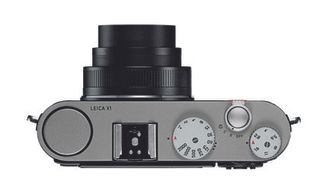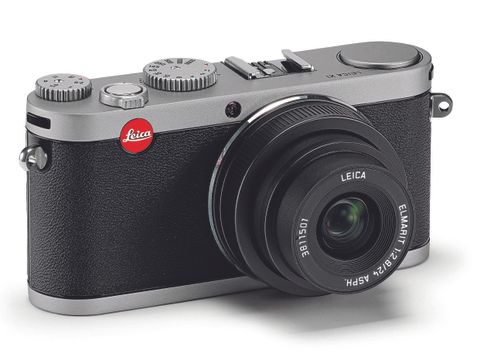Why you can trust TechRadar
Leica X1 review: Build quality & handling
Considering its target market, the X1 has more in common design-wise with Leica's rangefinder offerings than with its cheaper consumer-orientated models, providing the user with a more manual experience.
The shutter speed dial common to the M-series, for example, is included on the top-plate, while a smaller aperture dial is provided alongside, as opposed to a more traditional lens-based aperture ring. The collar around the shutter release button is used to cycle through drive modes and power the camera up and down, while on the other side of the top plate lies a small flash, concealed under a rounded tab. Separating the two sides is a standard hot-shoe which accepts optional accessories such as flash units and an optical viewfinder.

Although it's something for which Leica is well known, it's difficult to fully appreciate the exhaustive checking and testing of each model that goes on during its manufacture, which no doubt goes some way to justifying Leica's pricing. Nevertheless, the X1's build quality and attention to detail should be obvious upon handling the camera for the first time, with the all-metal construction ensuring it's as solid as needs be, and leather trim around its middle to provide a better handling. Some of the buttons on the rear may be a little too small for some, but all are clearly marked.
While the camera's retro design is clearly key to its appeal, a slightly more modern menu system would be welcome. Admittedly, with its restricted colour palette and single list of options its focus is more on ease of use, and there's little chance of getting lost or confused by anything within it.

At just over 300g with its battery in place the camera also puts paid to the notion that an APS-C sensor and a wide-aperture lens translate into a weighty model, and while it's certainly a little bulky it's far smaller than it's nearest competitor, Fujifilm's X100. With its lens protruding only around half an inch or so away from the main body, it can also happily squeeze into most coat and trouser pockets.
Current page: Leica X1 review: Build quality & handling
Prev Page Leica X1 review: Overview Next Page Leica X1 review: Performance
